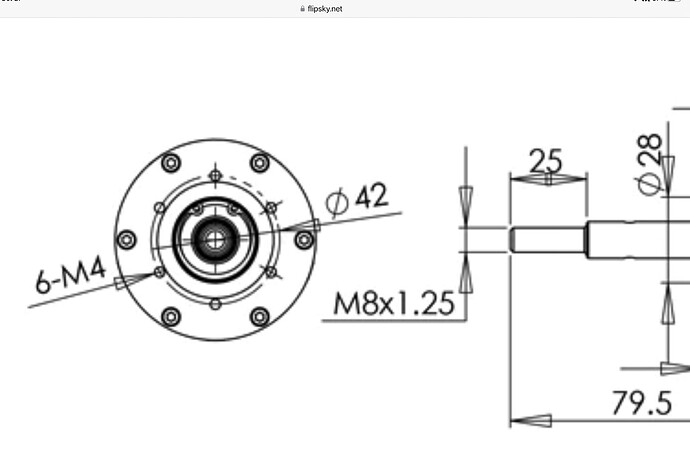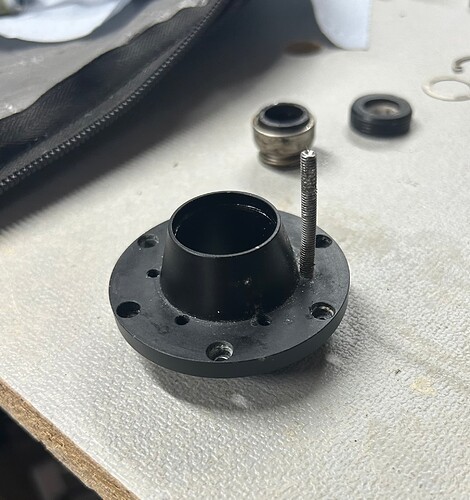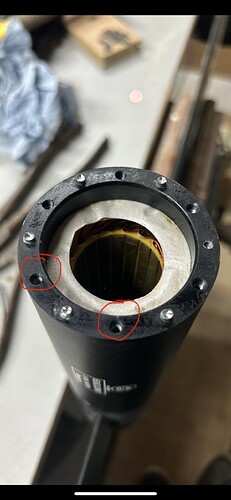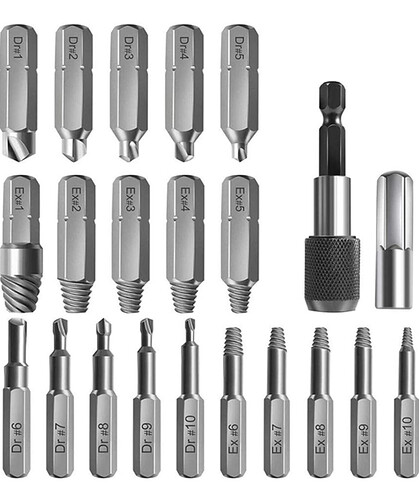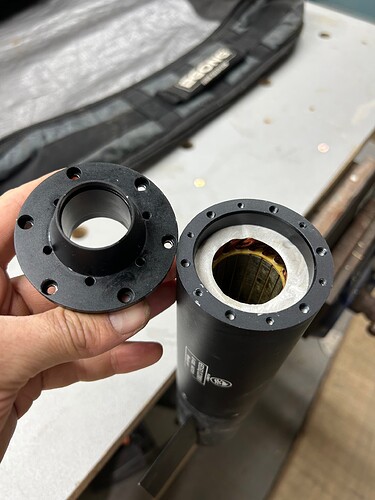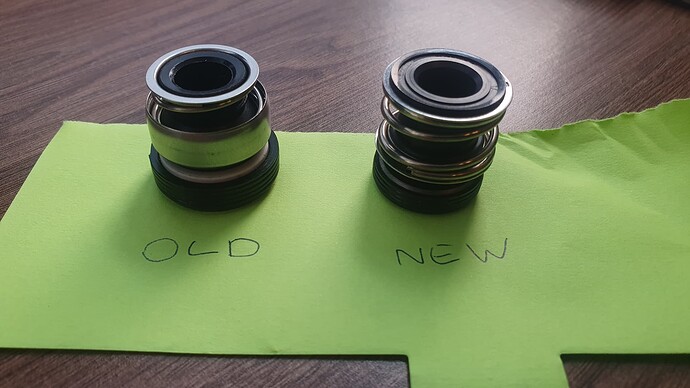Near m3 you have m4. Just flaten broken nuts and use m4…
I don’t recall to have seen such a terrible case on the forum.
How could one do to prevent the screws from being seized on a new motor ? Tef gel and mineral oil once a year ?
I was wondering what that other ring of threads were for, are they the same diameter? theres no detail for them on the motor diagram?. The only issue is i will have to turn the cap head crews into countersunk as the m4 bolts wont fit in the m3 holes. Good plan B though if shit hits the fan.
Yeah, man it’s m4 just turn it. Find some m4 bolts. Maby you will need to modify holes on cap. It will save your time…
Maybe put some grease or zinc paste on the screws. Zinc paste works well for me on the screws of the mast plate and fuselage to mast connection. Aluminium and stainless steel in salt water is a bad combination…
I think I’m to blame, after filling with corrosion x over 2 years ago I put some lock tight on the thread when putting back together (you can still see it on the threads). So don’t do as I did guys 
Duralac would be the stuff to use.
@Hailin do you use anything like this on your exposed threads? Or could you investigate?
I use the same ones to attach the the prop spacer which I had to drill out one of the bolts.
It’s these M4 holes we meant, not sure what they are for, my guess is the motor is used elsewhere for a different configuration 
Grind you broken bolts flush, index the end cap around and then use the new, unused threaded holes?
Have you tried this protocol ?
1 - Spray the screws with WD-40 penetrant, wait 30 min + heat the aluminium with a torch as aluminium expands much more than the stainless
2 - apply Extractor Drill Bits, 4 to 5mm in the heads or 1.5mm to 2mm in the 3mm diam thread ?
'Amazon.fr
3- before reassembling, apply the anti-seizure gel on the screws
These types of extractors don’t work very well, it’s cheaper and better to drill a hole then hammer a matching torx bit into it. It will plastically form a torx hole which can take a lot of torque.
I can’t see the link, but I have a set of extractors that are far superior to torx heads. As you try to extract they bore down into the hole and grip even tighter.
I don’t know what you’ve got but for thin material thicknesses (which will be the case for m4 bolts), the conical/threading extractors like the ones linked start to split the material and create pressure outwards that stop extraction.
Especially true in stainless steel.
Ask me how i know…
They’re out! Managed to get away with it pretty unscathed. I did a practice run of the welding a nut on idea but it was way to small and not enough thread to play with.
I simply put a powerful heater in front of the motor until it was too hot to touch and used a set of pluming type grips to grip the thread and managed to turn them out.
I think the build up of salt around the head of the bolt wasn’t helping as they screwed out fairly easily.
For m4 if there is bolt exposure I’d cut a straight slot, heat and just uncrew.
Yeah that was may thought too with that type of extractor, especially on a m3 bolt 
I ordered the shaft seal suggested in the aliexpress link but it’s the wrong size for the standard flipsky 65161.
The stationary sealing ring is only 23.3mm diameter, the old one removed is 26mm diameter. The compressive strength of the spring is also way higher than the origional.
It’s wrong link… I replaced with correct one and you have to choose one with outside diameter d7-26mm
Hi Osavcic, on the seal that you have listed, I only show a OD 45mm O ring. I do not see a ID 45mm? I see a ID 44mm & a ID 46mm O ring though? Shipping takes forever, so I was hoping to make sure I order the correct one right from the start. Thanks A Lot for your contributions!
